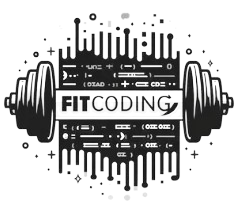Are you curious about how medical devices are monitored after reaching the market to ensure long-term safety? Clinical evaluations assess a device’s safety and performance before approval. Partnering with skilled regulatory consulting firms helps navigate compliance requirements. Screening medical devices for effectiveness guarantees that only safe, high-quality products reach healthcare professionals and patients.
PMSR is crucial for gathering real-world data to maintain device safety and performance. Understanding its significance helps manufacturers refine products and improve healthcare outcomes. Here, we explore the key differences between this screening method and clinical evaluations. Keep reading to learn how these evaluations benefit medical advancements and contribute to patient safety worldwide.
Purpose and Objectives
Post-market surveillance ensures ongoing protection by monitoring medical devices after market release. It gathers real-world performance data, analyzing trends and potential improvements for better patient outcomes. Trusted regulatory affairs consulting companies assist manufacturers in meeting compliance requirements. This continuous evaluation helps maintain product reliability and adherence to global safety regulations.
Alternatively, clinical evaluations verify protection and efficacy before regulatory approval, focusing on the intended use and patient benefits. These assessments involve systematic clinical data reviews to establish equipment functionality under controlled conditions. They help manufacturers demonstrate compliance with safety standards before bringing products to the market. This pre-market analysis ensures devices meet essential quality and performance expectations.
Timing of Implementation
Regulatory reporting begins once a medical device is introduced into the healthcare market. It involves continuous monitoring, allowing manufacturers to track product performance and emerging safety trends. Quality management systems advisors provide expertise in regulatory reporting, ensuring compliance with evolving industry standards. This ongoing assessment ensures product reliability throughout its lifecycle.
Clinical evaluations occur before market entry, assessing a device’s safety, effectiveness, and risk factors. They establish whether medical equipment meets requirements before obtaining regulatory approvals. Data from controlled trials and investigations supports security claims and intended use verification. This step is critical for ensuring readiness before a product reaches patients.
Data Sources Utilized
Compliance monitoring gathers real-world data from various sources, including patient feedback and incident reports. This broad-spectrum analysis helps detect trends, optimize performance, and enhance patient protection. Skilled regulatory compliance professionals assist manufacturers in structuring data collection strategies. These insights support continuous improvement and necessary updates to device performance.
Clinical evaluations, however, rely on structured clinical trials, literature reviews, and laboratory studies. These sources provide controlled conditions to validate the device’s safety and intended function. Pre-market research comprehensively explains a device’s potential benefits and limitations. These findings play a key role in securing regulatory approvals for commercialization.
Scope of Analysis
This safety tracking assesses real-world performance by identifying emerging risks, usage trends, and overall equipment effectiveness. It offers valuable insights that support modifications and regulatory updates as necessary. Skilled professionals in compliance monitoring guide businesses in assessing post-market data. This ongoing surveillance ensures the device remains effective for long-term use.
However, clinical evaluations focus on pre-market safety and performance through risk assessment and laboratory studies. These assessments help establish whether a device meets its intended purpose and patient expectations. They provide a structured approach to verifying quality before commercialization. This process ensures the product is suitable for use in medical environments.
Outcome and Reporting
Post-market surveillance results in periodic reports submitted to regulatory authorities to maintain compliance. These reports highlight safety trends, performance consistency, and emerging risk factors. Trusted medical equipment regulatory consulting firms assist in compiling and submitting necessary documentation. Regular monitoring ensures devices continue to meet evolving industry and patient wellbeing standards.
Clinical evaluations produce structured reports used for regulatory approvals and initial market entry. These reports document trial outcomes, performance results, and risk-benefit analysis findings. Manufacturers use these evaluations to secure necessary certifications and gain regulatory acceptance. This process establishes product credibility before distribution in healthcare markets.
Ensuring medical device compliance requires expertise, precision, and ongoing monitoring for long-term market success. Trusted regulatory affairs consulting companies provide tailored solutions to streamline the PMSR process. Comprehensive post-market surveillance enhances equipment credibility and strengthens regulatory adherence. Partnering with experts simplifies the process, ensuring sustained product performance and seamless market operations.











